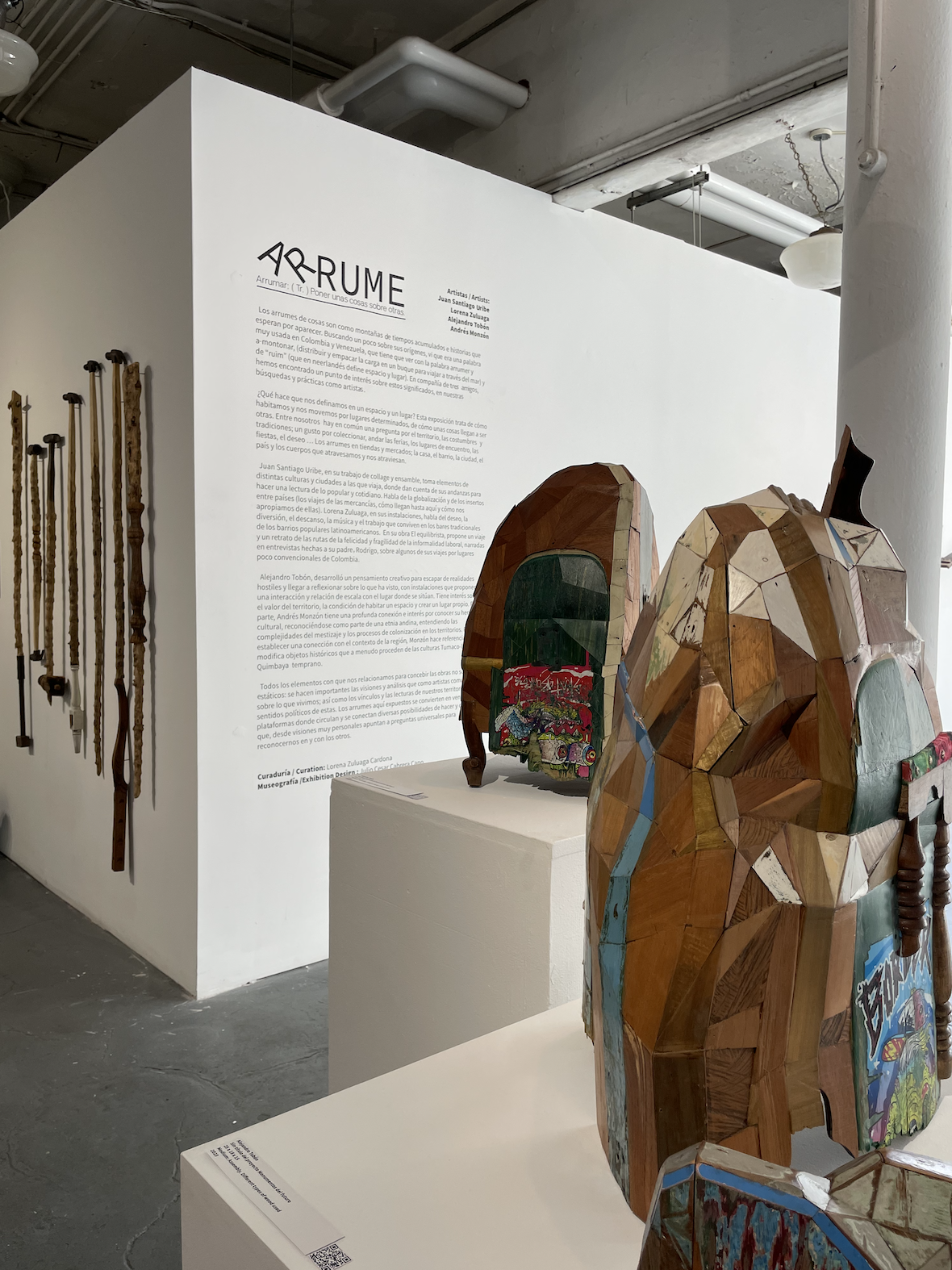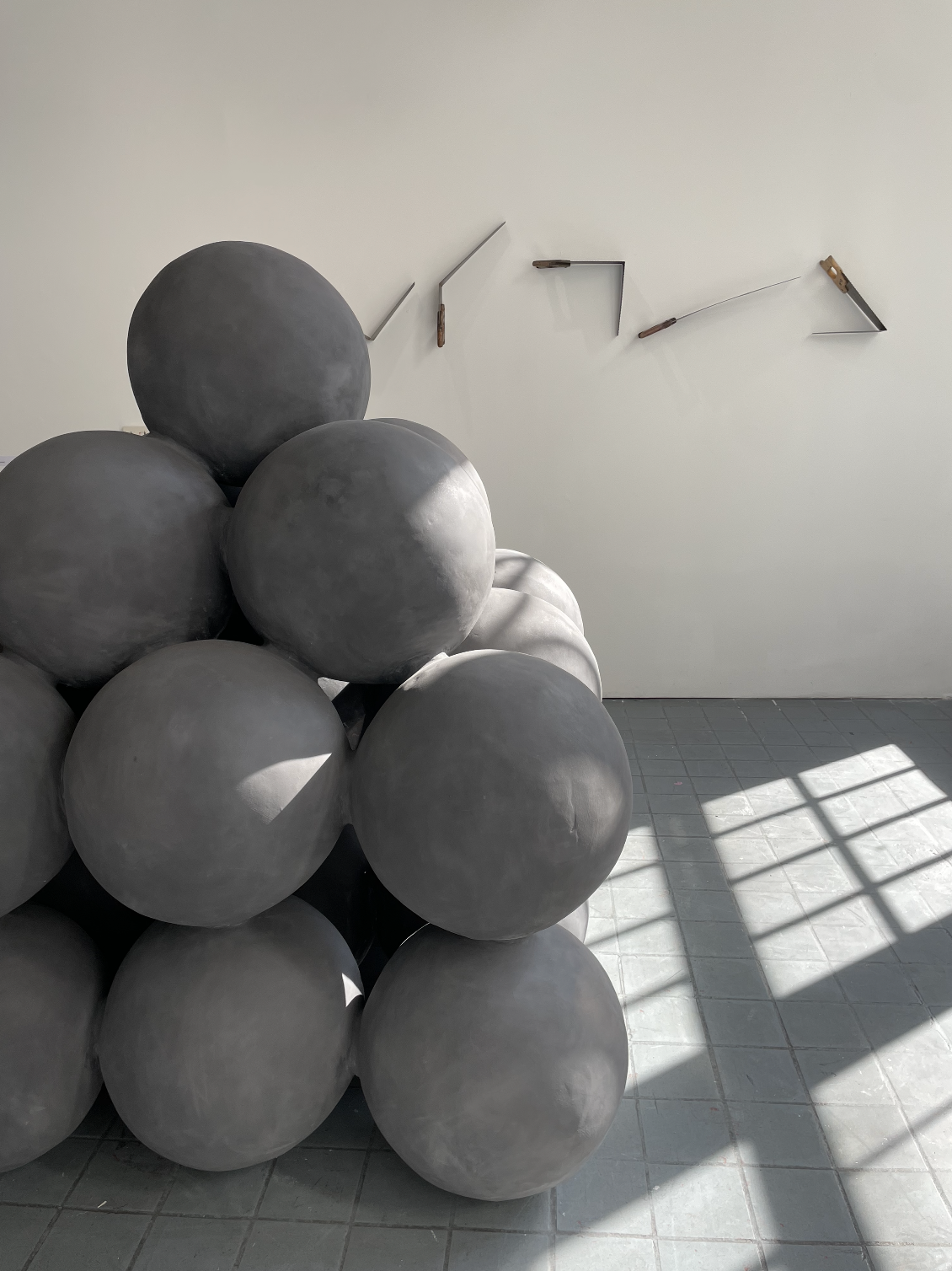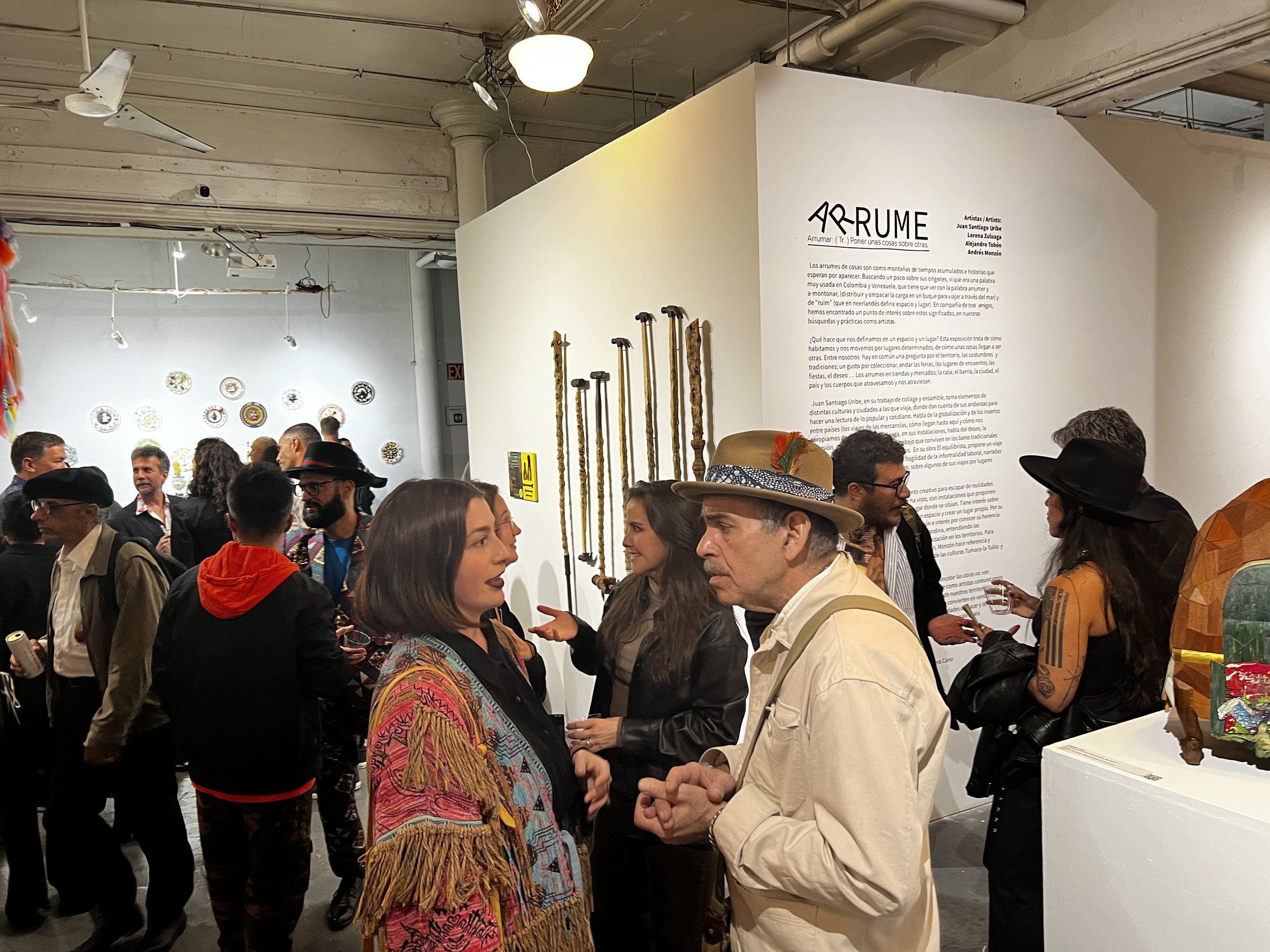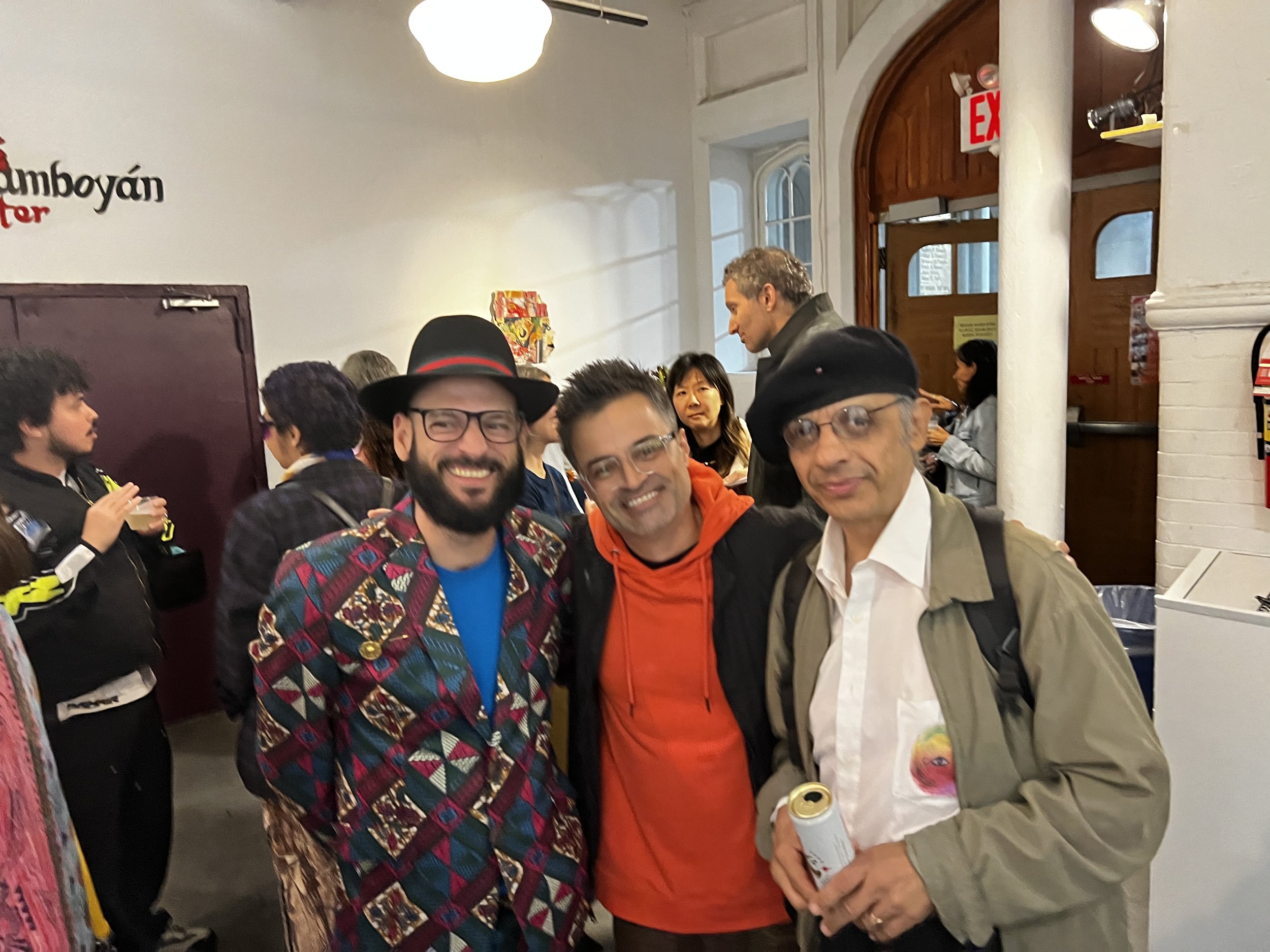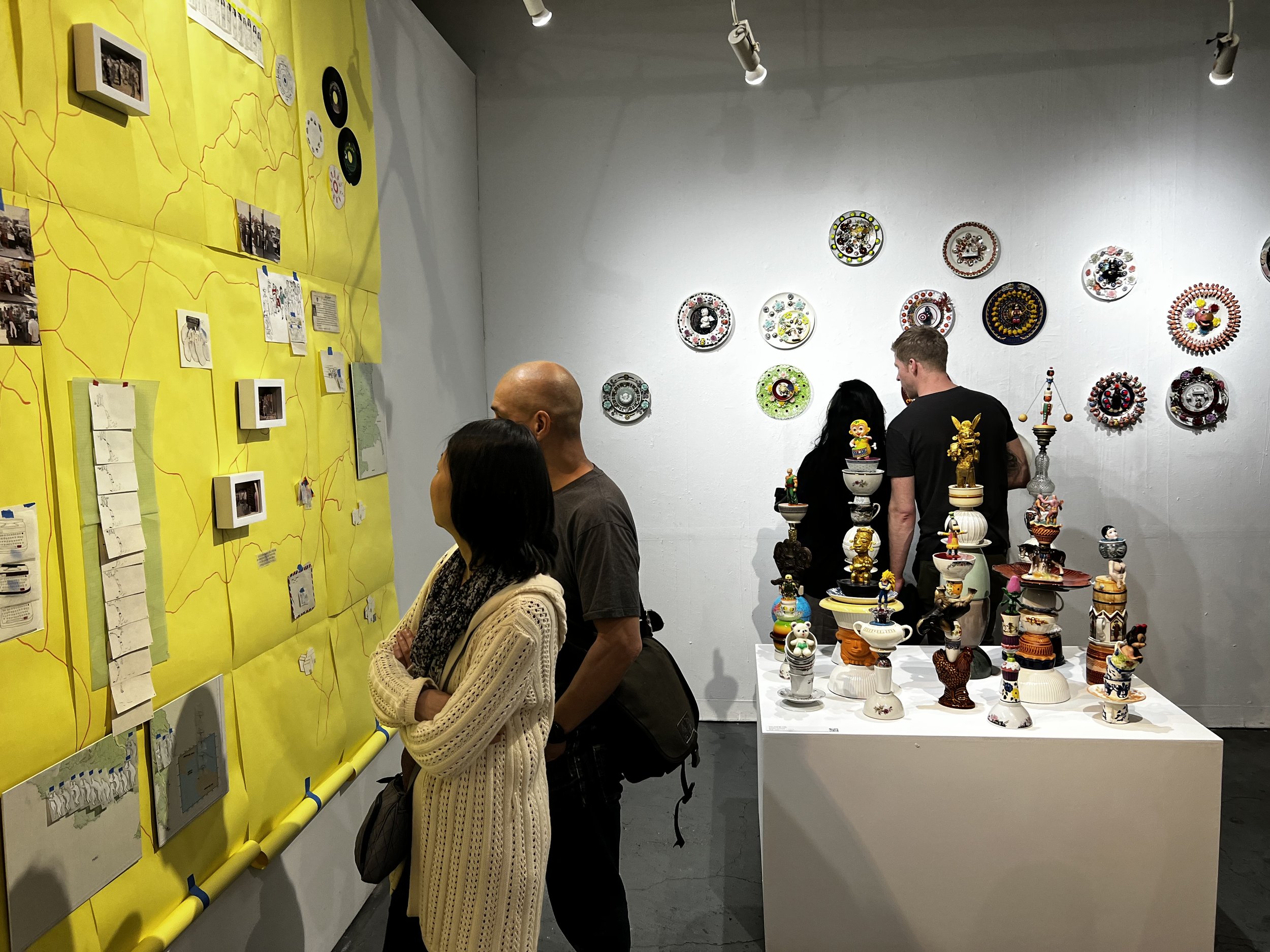Arrume
Arrume
Curator: Lorena Zuluaga Cardona
Exhibition Design: Julio César Cabrera
Artists: Juan Santiago Uribe, Alejandro Tobón, Andrés Monzón, Lorena Zuluaga Cardona
Dates: April 21 - June 15, 2023
Opening Reception: April 21, 6:30-8pm
Members Preview: 6-6:30pm
Gallery: LES Gallery at The Clemente Soto Vélez Cultural Center
An Arrume is like a mountain of accumulated time and stories waiting to appear. While researching the origins of this word I found that it is commonly used in Colombia and Venezuela and it relates to the verbs arrumer (to stow) and a-montonar (to pile up). This word was used to describe the process of distributing and packing cargo on a ship to travel across the sea. It is also associated with the Dutch “ruim” which means place and space. Reflecting on these meanings, three friends and I have come together to find common threads within our own art and research practices.
How do we define ourselves within a space and a place? This exhibition is about how we inhabit and move through certain areas, and how some things end up becoming others. There is a common concern among us with territory, with customs and traditions; a tendency to collect, to wander through fairs, public spaces, parties; a concern with desire… Arrumes in shops and markets, at home, in the barrio, in the city, in the country; a concern for the bodies that we go through, and the bodies that go through us.
Juan Santiago Uribe uses collage and assemblage in his work, taking elements from different cultures and cities he has traveled to, he records his wanderings and reflects on popular culture and the quotidian. Uribe talks about globalization and the connections between countries (the movements of goods, how they arrive to where we are, and how we appropriate them). Through art installations, Lorena Zuluaga talks about the way desire, fun, rest, music, and labor coexist in the traditional bars of traditional Latin American neighborhoods. In her work El equilibrista, she proposes a journey and portrait of the paths of happiness and fragility of informal work, told through interviews with her father, Rodrigo, about some of his trips to unconventional places in Colombia.
Alejandro Tobón developed a creative strategy to escape from hostile realities and to reflect on what he has seen. He constructs art installations that interact and form a relationship of scale with the place where they are located. He is interested in the value of territory, the condition of inhabiting a space and creating a place of one’s own. In their own practice, Andrés Monzón has a deep connection and concern for their cultural heritage, they recognize themselves as part of an Andean ethnicity while understanding the complexities of miscegenation and the processes of colonization within the region. In order to root their work within the territory, Monzón references and modifies historical objects, often from the Tumaco-la Tolita and Quimbaya cultures.
There is nothing static about the elements that we were able to relate to when we conceived our work: there is an emphasis here on perspectives and analyses that we communicate as artists about what we experience, we insist as well on the connections and interpretations drawn from our territories and their political implications. The Arrumes exhibited here become windows-platforms where different possibilities of doing and seeing circulate and connect, and which, from very personal views, lead to universal questions that allow us to recognize ourselves in others and with others.
_________________________________________________________________________________________
Los arrumes de cosas son como montañas de tiempos acumulados e historias que esperan por aparecer. Buscando un poco sobre sus orígenes, vi que era una palabra muy usada en Colombia y Venezuela, tiene que ver con la palabra arrumer y a-montonar, (distribuir y empacar la carga en un buque para viajar a través del mar) y de “ruim” (que en neerlandés define espacio y lugar). En compañía de tres amigos, hemos encontrado un punto de interés sobre estos significados, en nuestras búsquedas y prácticas como artistas.
¿Qué hace que nos definamos en un espacio y un lugar? Esta exposición trata de cómo habitamos y nos movemos por lugares determinados, de cómo unas cosas llegan a ser otras. Entre nosotros, hay en común una pregunta por el territorio, las costumbres y tradiciones; un gusto por coleccionar, andar las ferias, los lugares de encuentro, las fiestas, el deseo … Los arrumes en tiendas y mercados; la casa, el barrio, la ciudad, el país y los cuerpos que atravesamos y nos atraviesan.
Juan Santiago Uribe, en su trabajo de collage y ensamble, toma elementos de distintas culturas y ciudades a las que viaja, donde dan cuenta de sus andanzas para hacer una lectura de lo popular y cotidiano. Habla de la globalización y de los insertos entre países (los viajes de las mercancías, cómo llegan hasta aquí y cómo nos apropiamos de ellas). Lorena Zuluaga, en sus instalaciones, habla del deseo, la diversión, el descanso, la música y el trabajo que conviven en los bares tradicionales de los barrios populares latinoamericanos. En su obra El equilibrista, propone un viaje y un retrato de las rutas de la felicidad y fragilidad de la informalidad laboral, narradas en entrevistas hechas a su padre, Rodrigo, sobre algunos de sus viajes por lugares poco convencionales de Colombia.
Alejandro Tobón, desarrolló un pensamiento creativo para escapar de realidades hostiles y llegar a reflexionar sobre lo que ha visto, con instalaciones que proponen una interacción y relación de escala con el lugar donde se sitúan. Tiene interés sobre el valor del territorio, la condición de habitar un espacio y crear un lugar propio. Por su parte, Andrés Monzón tiene una profunda conexión e interés por conocer su herencia cultural, reconociéndose como parte de una etnia andina, entendiendo las complejidades del mestizaje y los procesos de colonización en los territorios. Por eso, está enfocado en referenciar su trabajo desde la cerámica con la cultura Tumaco la Tolita y el Quimbaya temprano.
Todos los elementos con que nos relacionamos para concebir las obras no son estáticos: se hacen importantes las visiones y análisis que como artistas comunicamos sobre lo que vivimos; así como los vínculos y las lecturas de nuestros territorios y los sentidos políticos de estas. Los arrumes aquí expuestos se convierten en ventanas - plataformas donde circulan y se conectan diversas posibilidades de hacer y de ver y que, desde visiones muy personales apuntan a preguntas universales para reconocernos en y con los otros.
Press:


